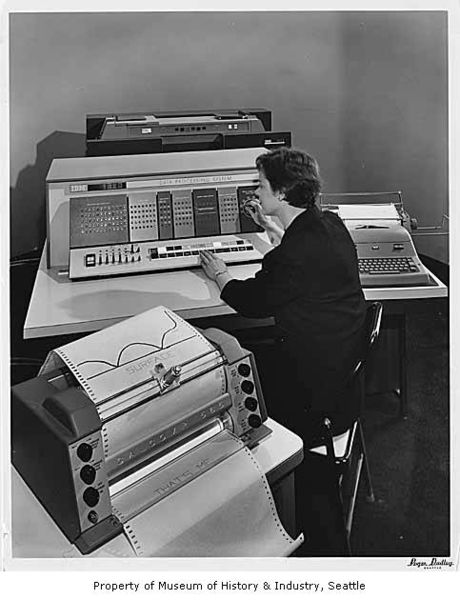The IBM 1400 series are second-generation (transistor) mid-range business decimal computers that IBM marketed in the early 1960s. The computers were offered to replace tabulating machines like the IBM 407. The 1400-series machines stored information in magnetic cores as variable-length character strings separated on the left by a special bit, called a "wordmark," and on the right by a "record mark." Arithmetic was performed digit-by-digit. Input and output support included punched card, magnetic tape, and high-speed line printers. Disk storage was also available.
IBM 1401 Data Processing System, the first member of the 1400 series
A transistor computer, now often called a second-generation computer, is a computer which uses discrete transistors instead of vacuum tubes. The first generation of electronic computers used vacuum tubes, which generated large amounts of heat, were bulky and unreliable. A second-generation computer, through the late 1950s and 1960s featured circuit boards filled with individual transistors and magnetic-core memory. These machines remained the mainstream design into the late 1960s, when integrated circuits started appearing and led to the third-generation computer.
IBM 1620
TRADIC



